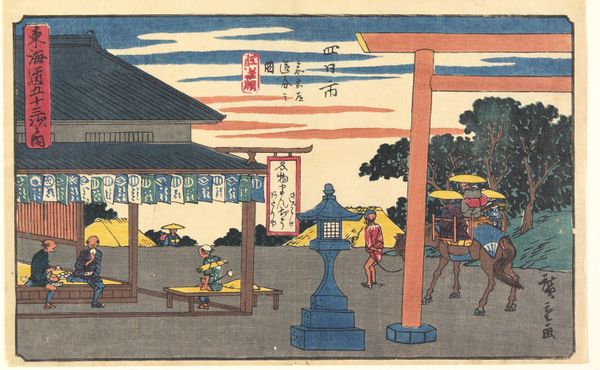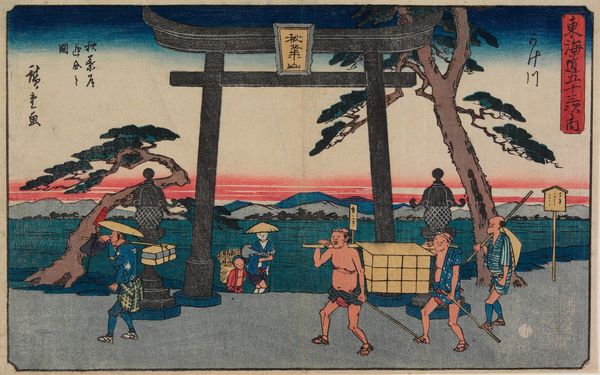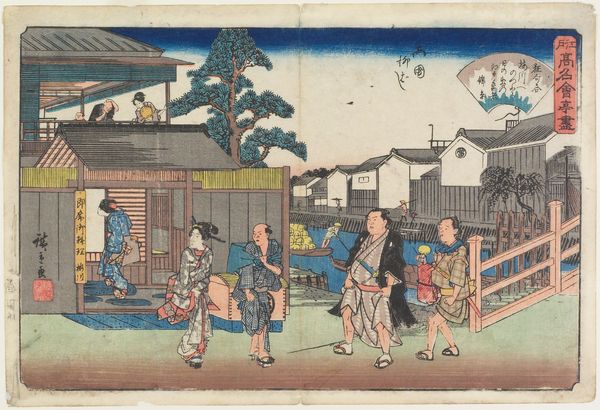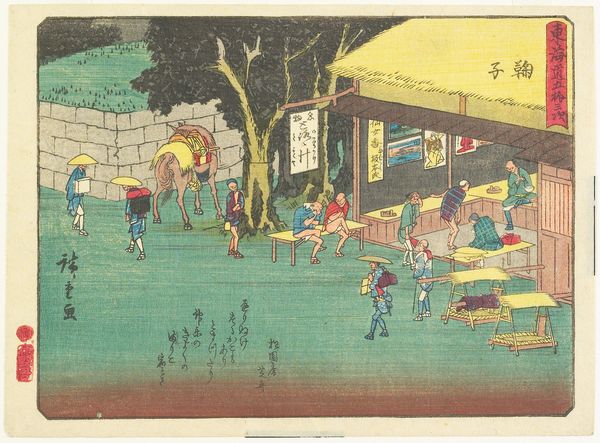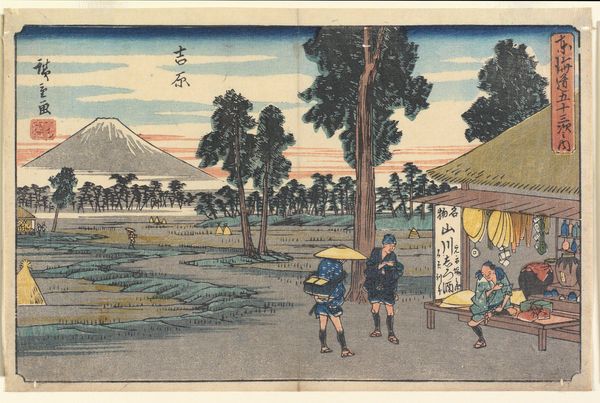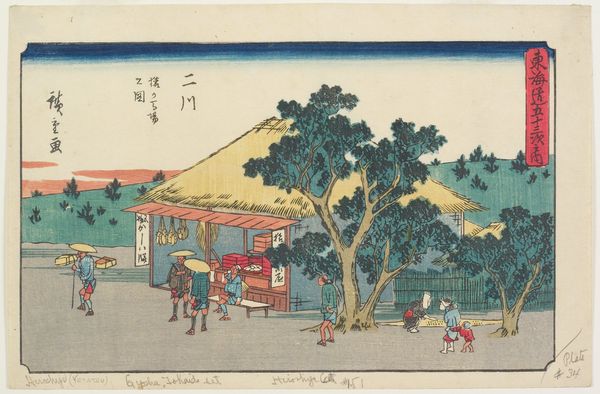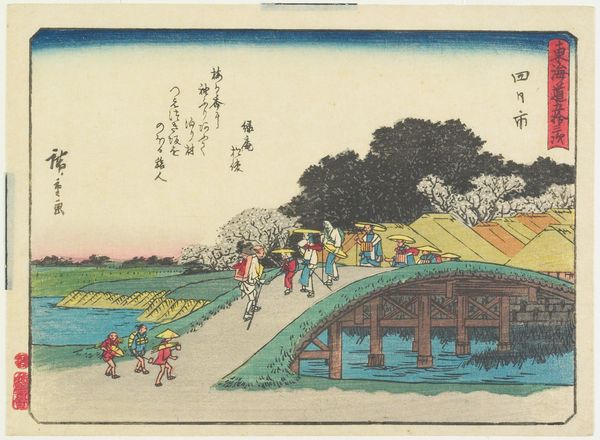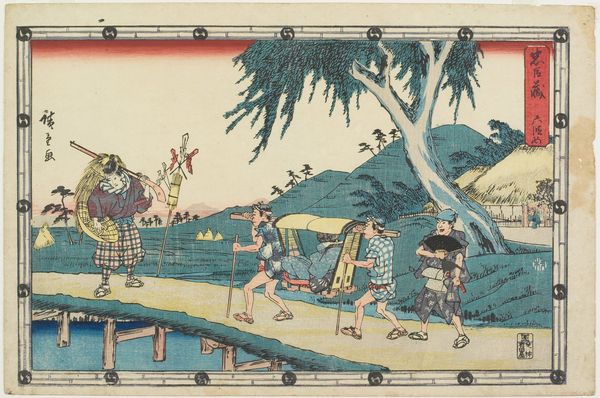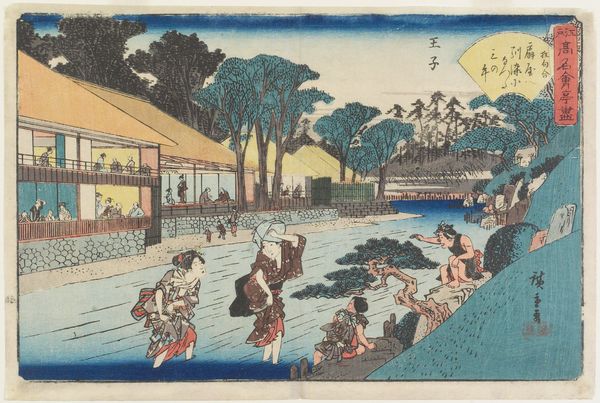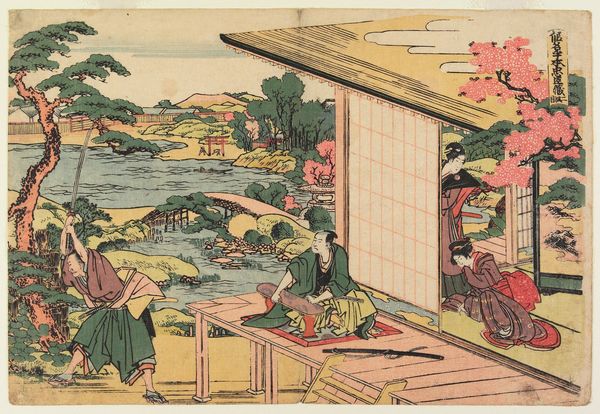
Itomi(-)ya Teahouse at the Fork of Yokkaichi 1841 - 1842
0:00
0:00
print, watercolor, ink
# print
#
asian-art
#
landscape
#
ukiyo-e
#
japan
#
watercolor
#
ink
Dimensions: 7 11/16 x 12 3/8 in. (19.5 x 31.5 cm) (image)
Copyright: Public Domain
Editor: This is “Itomi(-)ya Teahouse at the Fork of Yokkaichi” made by Utagawa Hiroshige sometime between 1841 and 1842. It’s a woodblock print using ink and color, and it strikes me as capturing a really calm moment in a bustling public space. What kind of stories do you see embedded in this print? Curator: It's fascinating to consider Hiroshige's print through a socio-political lens. These *ukiyo-e* prints weren’t simply landscapes; they were powerful cultural tools that reflected and shaped popular perceptions. How do you think this print engaged with ideas about travel and leisure at the time? Editor: Well, it seems to romanticize travel, focusing on the social aspect of taking a break on the road. There’s a sense of community and connection, even for people just passing through. Curator: Precisely. The Tōkaidō road itself was a crucial artery, not just for physical transportation, but for the flow of ideas and cultural exchange. Think about the teahouse as a social hub, a space where different classes might interact, even if briefly. Notice how Hiroshige portrays these figures; what does that tell us about his intended audience and the message he was trying to convey? Editor: I see. It’s not just a pretty picture; it's also shaping how people thought about the Tōkaidō and their place within it. These prints made the journey accessible, maybe even aspirational, to a wider audience beyond the elite who physically travelled it. Curator: Exactly. And in a world increasingly shaped by political and economic change, these images of everyday life held considerable social power. It's made me rethink how prints participated in defining public imagination. Editor: Me too. It's much more than just documenting a scene, but rather shaping an idealized version of travel. Thanks for your insight!
Comments
No comments
Be the first to comment and join the conversation on the ultimate creative platform.
